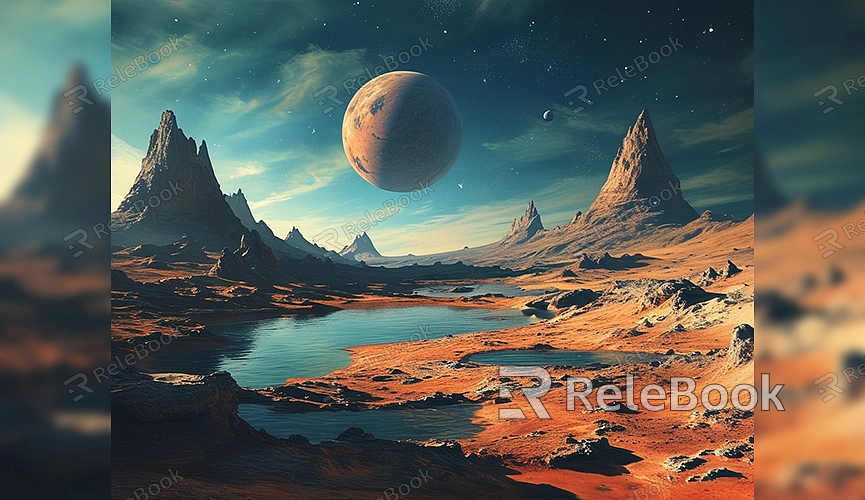How to render with cpu blender quality
Blender is a powerful open-source 3D creation tool widely used in animation, visual effects, and game development. When rendering high-quality images in Blender, many users face the decision of whether to use GPU or CPU rendering. While GPU rendering is typically faster, CPU rendering remains a strong option, especially in certain scenarios. This article will detail how to use CPU rendering in Blender to achieve high-quality images, helping you optimize your rendering results.
Understanding CPU Rendering

CPU rendering utilizes the computer's central processing unit (CPU) to perform rendering tasks. Although CPU rendering is usually slower than GPU rendering, it excels in handling complex scenes and high-precision rendering. Here are some advantages of using CPU rendering:
- Compatibility: CPU rendering supports a wider range of rendering features and is compatible with all types of computer systems.
- Stability: CPU rendering often demonstrates greater stability during long rendering tasks, reducing the risk of rendering crashes.
Configuring Blender for CPU Rendering
To use CPU rendering in Blender, you need to make some basic settings:
1. Open Blender: Launch the Blender software and load the project file you want to render.
2. Select Render Engine: In the Blender interface, switch to the “Render” settings panel. Ensure your render engine is set to “Cycles.” The Cycles render engine supports CPU rendering and can provide high-quality results.
3. Set CPU Rendering: In the “Render” settings panel, find the “Device” option. Select “CPU” as the rendering device. If you are using both GPU and CPU, you can choose the “CPU + GPU” option to leverage the strengths of both.
4. Adjust Sampling Settings: In the “Sampling” settings, increase the number of samples to improve rendering quality. Although a higher sample count will increase rendering time, it significantly enhances the detail and clarity of the image. Adjust the sample count according to your project’s needs.
5. Enable Denoising: In the “Render” settings, enabling the denoise feature can reduce noise in the image and improve the quality of the final render. Blender offers various denoising algorithms, and you can select the most suitable one for your needs.
Optimizing CPU Rendering Performance
Optimizing performance is key when using CPU rendering. Here are some tips to improve CPU rendering efficiency:
1. Adjust Render Tile Size: In the “Render” settings, adjusting the tile size can affect rendering speed. Larger tiles can reduce CPU switching overhead but may increase memory usage. Choose a suitable tile size based on your computer's performance and memory configuration.
2. Optimize Scene Settings: Simplifying geometry and textures in your scene, and reducing unnecessary details can enhance rendering efficiency. Use instancing techniques (like reusing the same model in the scene) to lessen the rendering burden.
3. Reduce Light Bounces: In the material settings, reducing calculations for light reflections and refractions can improve rendering speed. While this may slightly lower the realism of the image, it can significantly enhance rendering efficiency.
4. Use Low-Resolution Test Renders: Before the final render, performing low-resolution test renders can help you quickly check and adjust settings. This saves time and reduces errors in high-resolution renders.
5. Clear System Memory: Ensure your computer has sufficient available memory during rendering. Close unnecessary applications and processes to free up system resources and boost rendering performance.
Post-Processing After Rendering
Once rendering is complete, post-processing can further enhance image quality:
1. Color Correction: Use Blender's “Compositing” workspace to perform color correction and adjustments. You can modify brightness, contrast, and color balance to achieve the desired effect.
2. Add Effects: Optionally, add some effects and post-processing features, such as glow or blur, to enhance the visual impact of the image.
3. Save and Export: After rendering, save the image in an appropriate file format (like PNG or JPEG) and create backups. Ensure the image quality meets your requirements for further use or sharing.
Resources for Enhancing Render Quality
Using high-quality resources can improve the final outcome when rendering in Blender. If you need a large number of high-quality 3D textures and HDRIs while creating models and virtual scenes, you can download them for free from [Relebook](https://textures.relebook.com/). If you need stunning 3D models, you can also download them from [Relebook](https://3dmodels.relebook.com/), which offers a wide range of premium 3D resources to enhance your design quality and efficiency.
Rendering high-quality images with CPU in Blender may be slower than GPU rendering, but it remains an effective rendering method. By configuring appropriate rendering settings, optimizing CPU rendering performance, and performing post-processing, you can achieve excellent rendering results. I hope the tips and steps in this article help you successfully complete high-quality CPU rendering projects.

